Originally published by Space Intel Report. Read the original article here.
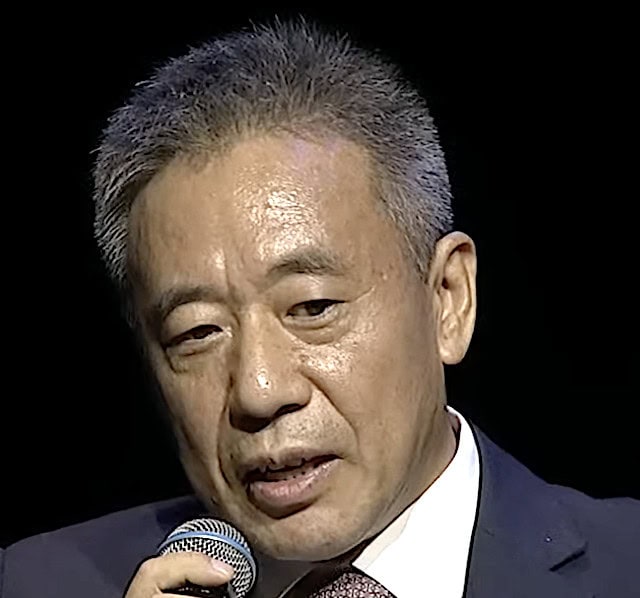 Zhigang Bian, vice chairman, China National Space Administration (CNSA). (Source: IAC 2025 video)
Zhigang Bian, vice chairman, China National Space Administration (CNSA). (Source: IAC 2025 video)
SYDNEY — Chinese representatives sought to portray their government as actively working on a space traffic management regime as part of a broader concern that mega-constellations pose a threat to the long-term use of low Earth orbit.
In statements here to the 76th International Astronautical Congress (IAC), these officials left many questions unanswered but clearly stated that China viewed orbital crowding and debris mitigation as issues meriting international attention, to be preceded by a Chinese national regulatory response.
The world is now faced with the fact that its two biggest space powers, China and the United States, find it increasingly difficult to speak to each other, a difficulty that is especially acute when it sovereignty-related topics such as space development.
The Wolf Amendment, which since enactment in 2011 has continued to be inserted into Congressional appropriations bills, prohibits certain US government agencies, but notably not the Department of Defense, from using government funds to engage in direct bilateral cooperation on space matters.
The Wolf Amendment also does not prevent multilateral discussions and by itself should not block discussions on coordinating space traffic to avoid collisions between satellites.
Both countries’ space industries are fielding large constellations of broadband satellites into low Earth orbit.
The highest-ranking Chinese government representative to the IAC 2025 meeting was Zhigang Bian, vice administrator of the China National Space Administration (CNSA). Bian said China fully recognizes the debris and traffic-management problems posed by the increased congestion in low Earth orbit.
“With the rapid development of global space activity, we are now seeing a very serious challenge to sustainable space development, especially with the mega-constellations,” Bian told the congress Sept. 29. “We can see there are more risks of in-orbit collisions and [risks to] to frequency and in-orbit resources.”
Bian said China wants to maintain the United Nations as “the core of the international system to implement the 21 guidelines for the long-term sustainability of outer space activity. Within the framework of the UN we will promote policy-making for the global governance of outer space.”
The UN Committee on the Peaceful Uses of Outer space (COPUOS) in 2019 adopted 21 guidelines for the sustainability of outer space as a voluntary framework to preserve space as a viable environment for space missions.
Nationally, China will be deploying resources for research on space situational awareness and “to establish a space collision avoidance emergency response” regime, Bian said.
“China is now promoting the space debris mitigation top-level planning to promote the monitoring and alerting; and most importantly we are currently researching active removal of space debris in orbit.”
Asked if China’s regulations oblige satellite operators to deorbit their spacecraft at the end of their service lives, he said that is the case.
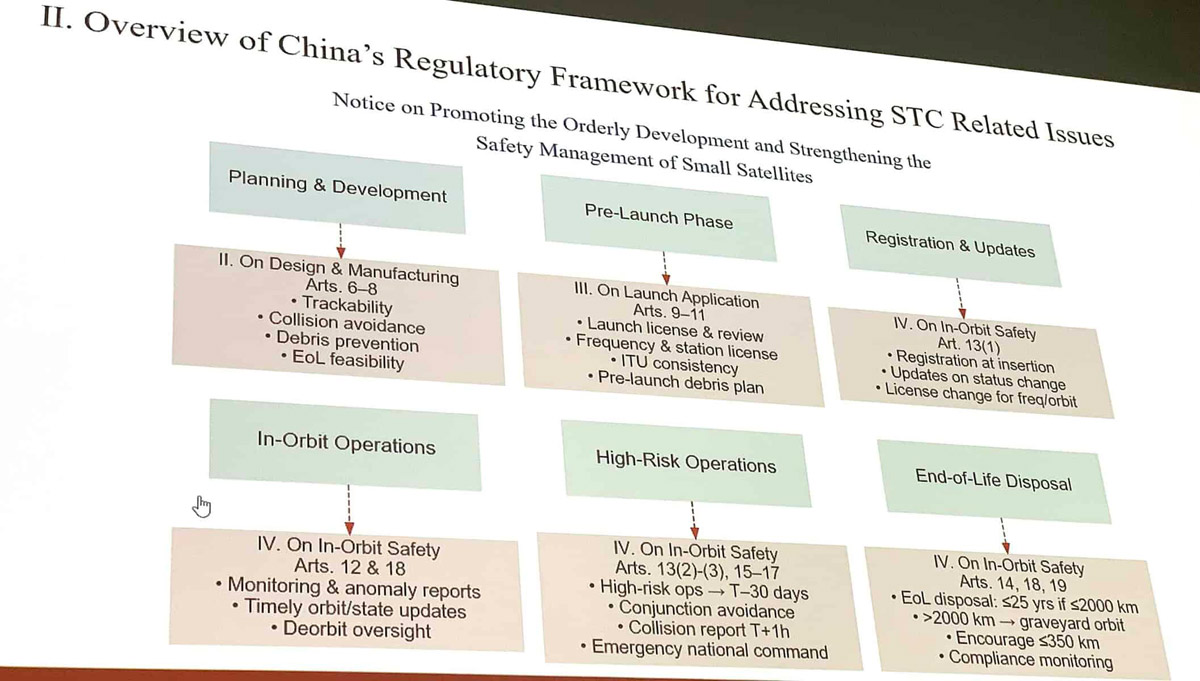
At a separate presentation here, Juqi Shen of the Beijing Institute of Technology School of Law, who is also a researcher at The Netherlands’ Leiden University, outlined specific actions by the Chinese government in the direction of debris mitigation and collision avoidance. Shen said not all of these measures have been codified into regulation; they remain recommendations.
Shen conceded that space traffic management may be a bridge too far for the international community. “National sovereignty concerns pose barriers to treaty-level projects, and military services limit information-sharing.”
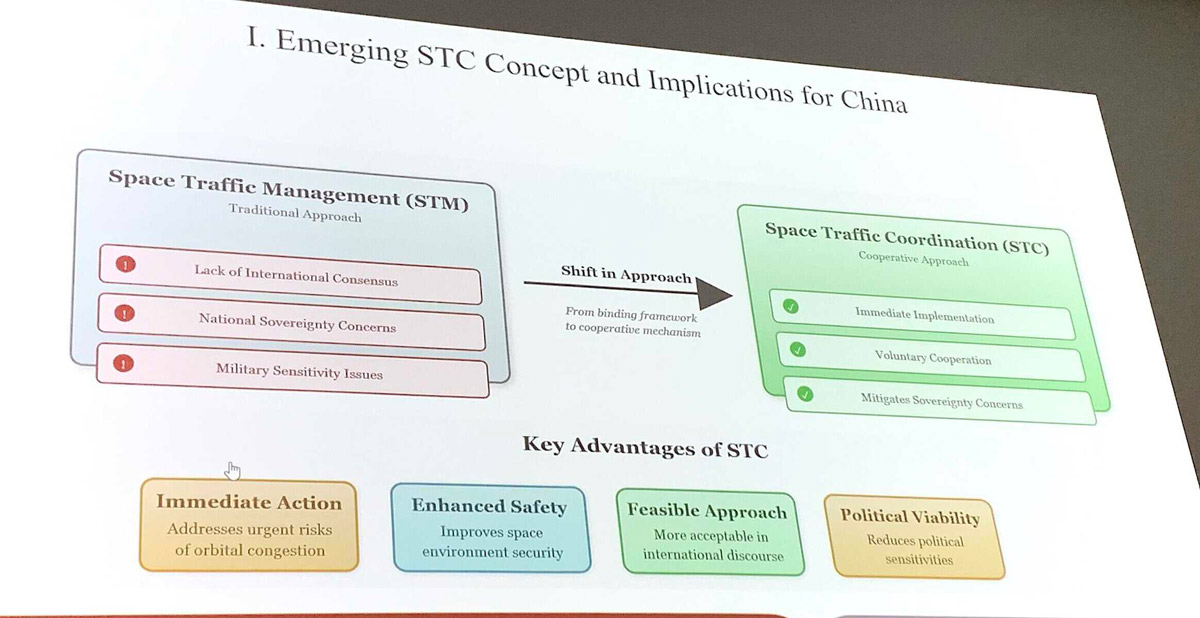
Instead, China is looking to space traffic coordination, which she said offers “a more flexible way” to pursue international cooperation instead of regulations. “It’s about soft-law practices rather than hard law or a new international treaty.”
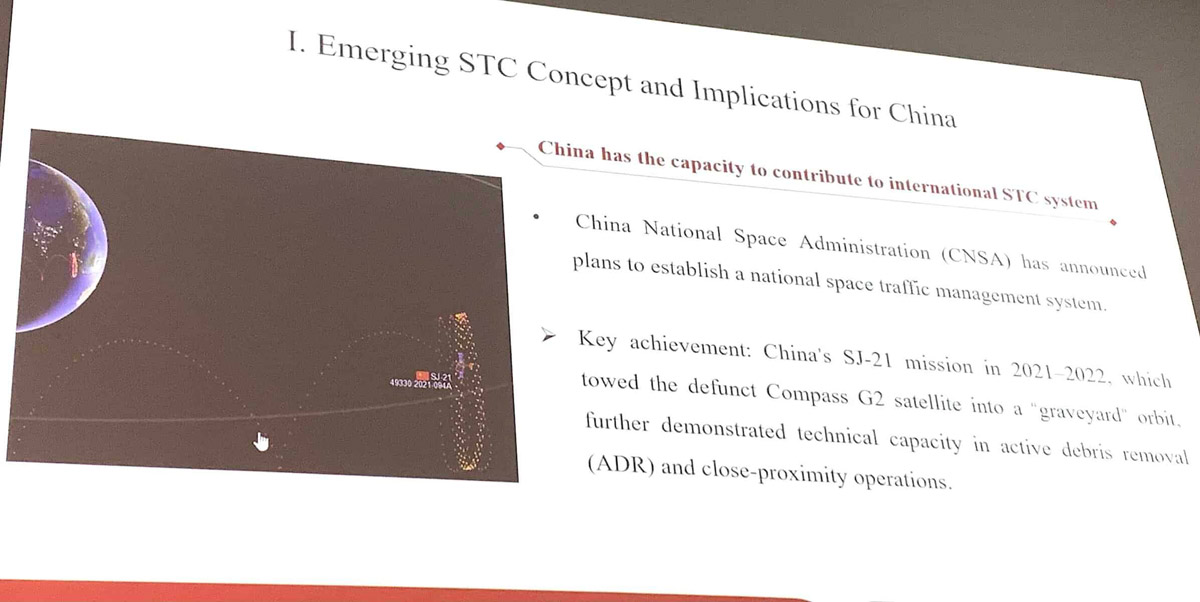
Shen said CNSA has announced plans to establish a national space traffic management system. She said the SJ-21 satellite’s successful mission to dock with the defunct Beidou -2 G2 satellite and move it into a graveyard orbit in early 2022 was an example of China’s seriousness.
“Even though China has not yet released its formal space traffic coordination or management policy, it has identified space traffic as a policy objective,” Shen said. “The goal is space traffic control to ensure safe, stable space operations.”
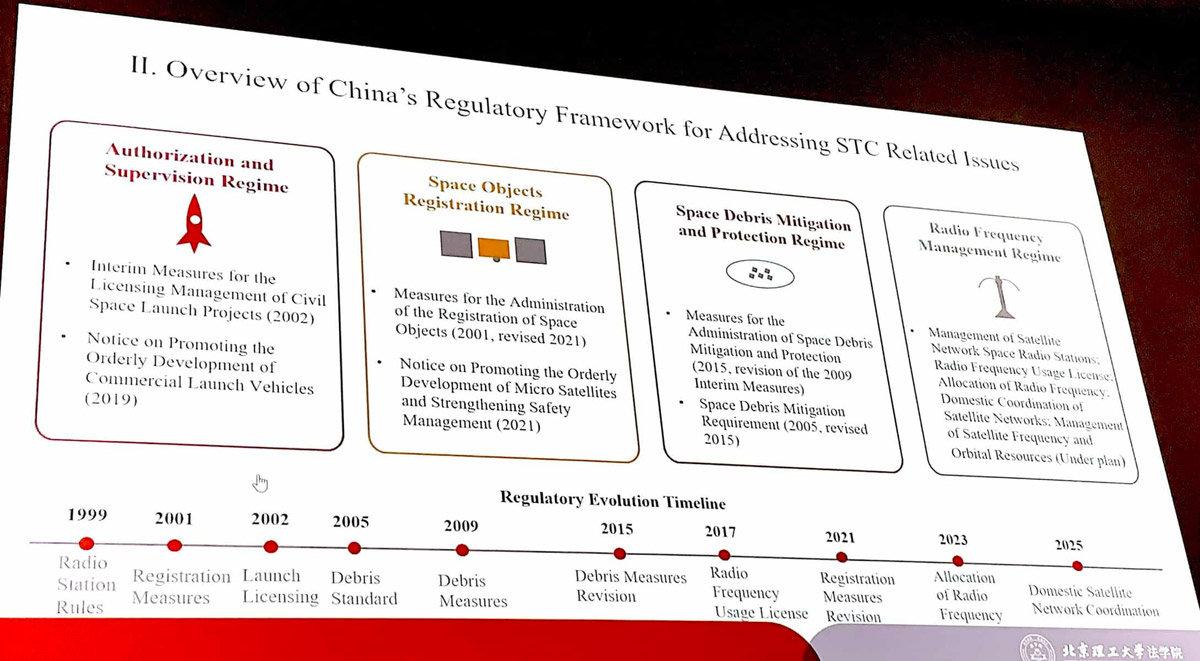
China’s regulations for space traffic coordination fall into four categories:
- An Authorization and Supervision Regime covers space system licensing and launches and the development of commercial launch vehicles.
- A Space Objects Registration Regime, focusing on the “orderly development of micro-satellites and strengthening safety management.
- A Space Debris Mitigation and Protection Regime, including a space debris mitigation requirement that was not fully explained. Shen said China has established a national standard of technical requirements for collision warnings.
- A Radio Frequency Management Regime dealing with satellite frequency assignments.
“These have been implemented over two decades, with incremental but steady progress,” Shen said, adding that China has been active in promoting an international information-sharing mechanism, notably through cooperative agreements with emerging spacefaring nations.
“There are gaps in China’s legal regime,” Shen said. “There is a need to define what is essential information for data sharing. And space traffic coordination requires determining an object’s intent,” she said requires knowledge of whether it’s a military satellite.
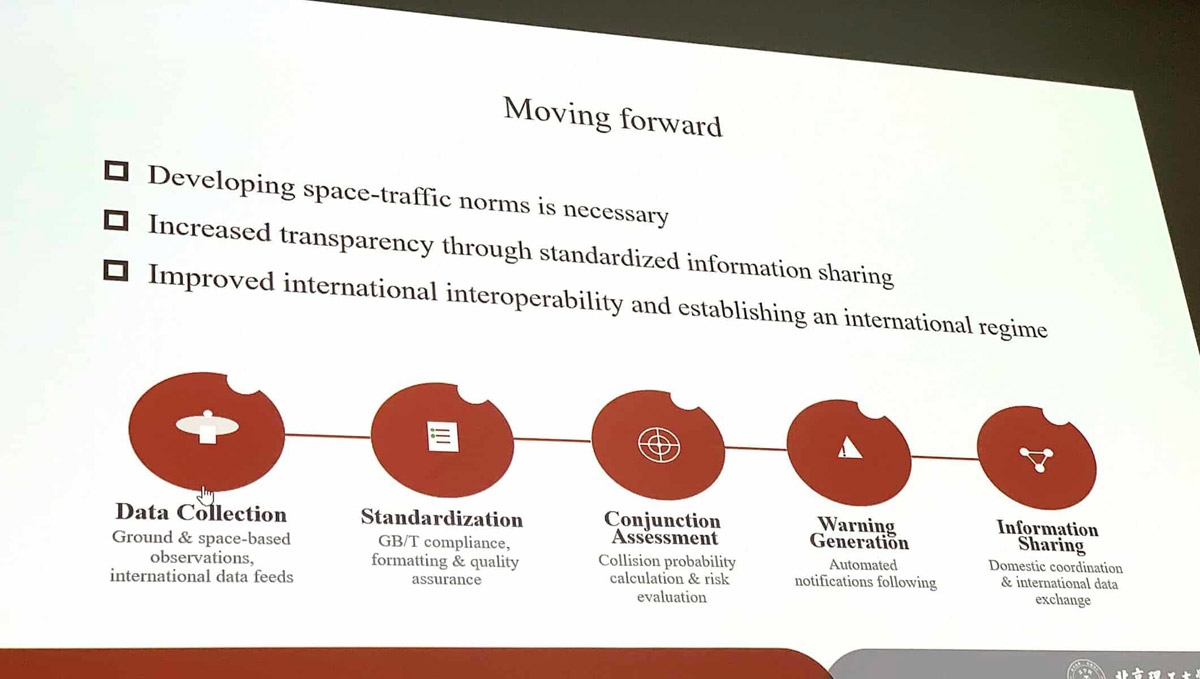
“There is a need to create standards for information sharing. But international space traffic coordination ultimately depends on trust and how national systems communicate with each other,” Shen said.
“We need international agreement on rules to reinforce the national regimes. China’s future contribution will also depend on how to engage with other countries’ international organizations to promote space traffic rules, technical standards and practical coordination.”
Originally published by Space Intel Report. Read the original article here.
